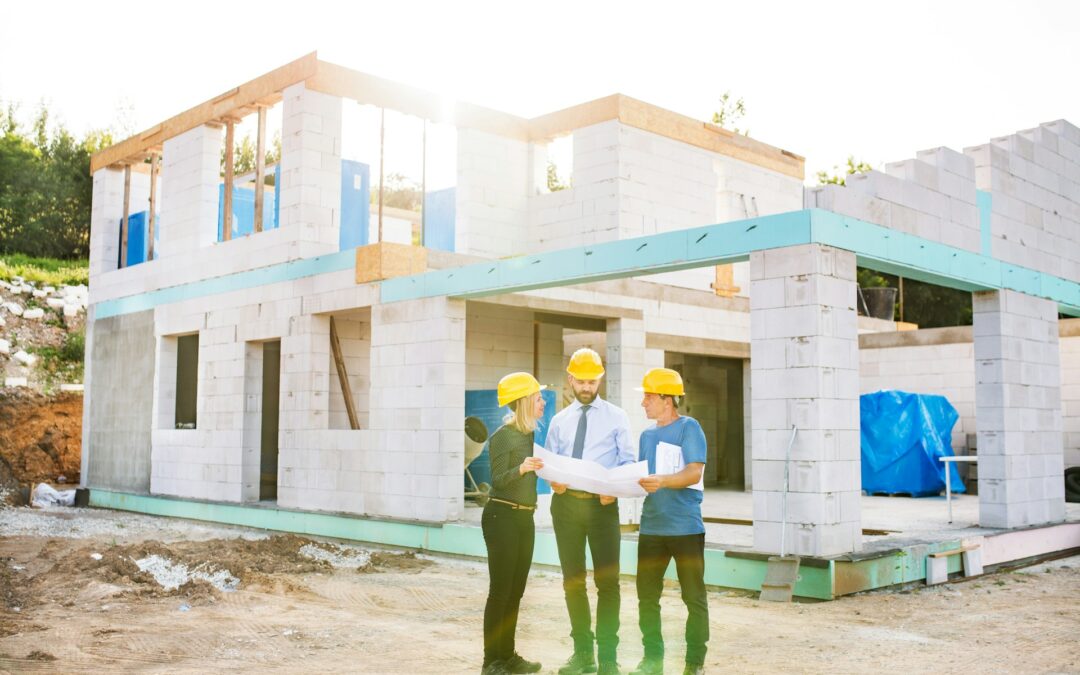Keeping water away from your home’s foundation isn’t just a smart thing to do. It’s one of the most important parts of protecting your structure, especially during the rainy seasons in places like DFW. Over time, rainwater and rising moisture can wear away at weak spots, causing damage you may not see right away. That’s where proper foundation waterproofing makes a real difference.
When it’s done the right way, it helps keep your walls, floors, and support beams dry and steady. But when certain steps get skipped or rushed, you might not know there’s a problem until signs of damage start showing up. In this post, we’ll look at mistakes we’ve seen and explain how small missteps in waterproofing can become bigger headaches later. Fall is a good time to get ahead of these issues while the ground is still in transition and easier to inspect.
What Happens When Waterproofing Gets Skipped or Done Wrong
We’ve worked on houses across Texas that showed water damage long before a major flood ever happened. The problem isn’t always how much water gets in, but how often it’s ignored. When waterproofing isn’t done right, even small leaks can add up over time.
- Cracks may start forming on interior walls or around baseboards
- Damp spots in basements or crawl spaces can grow into a wider problem
- Sinking or shifting foundations might follow after prolonged exposure to water
These issues don’t always appear all at once. Sometimes they show up slowly over months or even years. Water has a way of finding pathways into the foundation, especially when the ground swells and shrinks the way clay soil does here in Texas. That expansion and contraction can create pockets for water to build up, putting pressure on your foundation and weakening it from the outside in.
Waiting too long to address these problems means more than just extra repairs. It can change how your house feels, sloped floors, sticking doors, cold spots along the baseboards, and those aren’t the kinds of things that get better on their own.
Mistake #1: Thinking Gutters and Drainage Are Enough
Gutters can help keep water away from the roof and the edges of your home, but that’s not enough on its own. In DFW, the clay-heavy soil holds water differently. Once the ground gets saturated, surface drains and splash blocks may not stop moisture from creeping underground toward your foundation.
Here’s what we’ve noticed:
- Water can flow back toward the home if the slope around your yard isn’t right
- Gutter systems might overflow or clog during heavy rain, sending water where it shouldn’t go
- Even clean gutters with working downspouts won’t stop moisture from soaking into the soil and pressing against your foundation walls
That’s why foundation waterproofing needs to go below the surface. It’s not just about keeping water off your lawn or out of your gutters. It’s about keeping it from building up where you can’t see it.
Mistake #2: Using the Wrong Waterproofing Materials or Techniques
Not all foundations are built the same, so not every solution works the same way. A product that seals a crawl space in one part of Texas might not hold up against seasonal soil movement in another.
- Some quick-drying sealants start to peel or crack after a few wet-dry cycles
- Spray-on coatings might look fine at first but can wear down when exposed to shifting clay
- Store-bought waterproofing solutions often miss hidden trouble spots around joints or piers
Real protection doesn’t come from patch jobs or shortcuts. It comes from matching the right tools and methods to the actual structure and soil. In DFW and surrounding areas, that often means using techniques that allow the system to adjust as the ground changes, because we know it will.
Lift-Texas Construction provides waterproofing solutions that are designed to handle DFW’s active clay soils, combining below-grade barriers, professional sealants, and drainage control for complete protection.
Mistake #3: Ignoring Signs of Moisture or Movement
Before the chill of winter sets in, fall gives us a chance to look for weaknesses. This is when changes in moisture start showing up in places people don’t always think to check.
- A musty smell in the corners of your home
- Cracked paint or sticky windows that used to open just fine
- Puddles or dark spots under the house, even after light rain
These signs aren’t always dramatic, and that’s part of why they often get ignored. But each one tells us something important about the direction water is traveling or where the house might be sinking, even slightly. The earlier you spot them, the easier it is to limit the damage and take action while the soil is still responsive. By winter, frozen or hardened ground makes it harder to work below the surface.
A professional inspection checks more than just the surface. It follows clues that point to trouble areas, tracks how water moves after rainfall, and looks for both obvious damage and early warning signs. That’s not something most people can do without the right tools or training.
Why Professional Help Matters for Long-Term Protection
There’s a big difference between keeping water out for a season and keeping your foundation steady year after year. Foundation waterproofing works best when it follows a plan that accounts for your specific home, soil type, and how water tends to behave in your part of Texas.
Professionals don’t guess. We look at elevation changes, drainage pathways, and soil conditions to figure out what’s working and what’s not. Then we build around that.
- Long-term fixes involve addressing both surface water and subsurface pressure
- We choose materials that move with the ground instead of cracking against it
- Our methods prioritize keeping the foundation dry without creating new stress points
That kind of focus prevents future issues from sneaking up on you. It gives the structure a better chance to hold steady against soil movement, whether it’s drought one month or drenching rain the next.
Stay Dry, Stay Strong
Waterproofing your foundation might not seem like a top priority until the signs of damage start showing up. But by then, small mistakes, or skipped steps, can be harder to undo. Every foundation has a limit, and water has a way of finding the weak spots if we give it the chance.
That’s why getting ahead of it matters. Fall is a smart time to pay closer attention to those musty smells, those cracks under windows, or that one spot in the crawl space that always seems damp. Some signs are small, but they all mean something. And the more we listen to what the home’s trying to say, the fewer surprises come later.
Moisture near your foundation or subtle shifts in your floors or walls are signs that shouldn’t be ignored, especially with the unpredictable rainfall and clay soil in the DFW area. At Lift-Texas Construction, we help homeowners get to the root of these issues and prevent structural damage before it starts. Good foundation waterproofing can shield your home during storm season and for years to come. Reach out to us today to schedule an expert evaluation.

